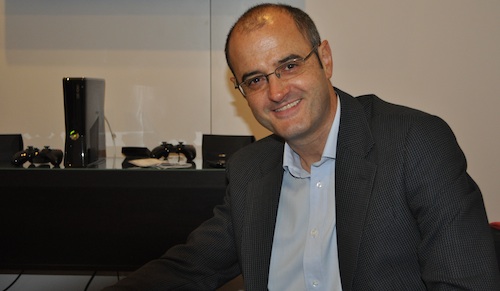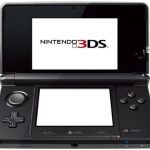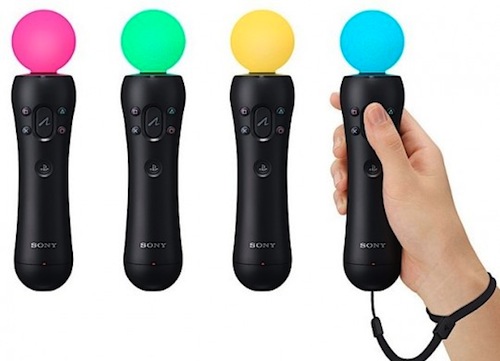
Motion controls and 3D will dominate your gaming experience in the years to come if the major console manufacturers have their way.
Nintendo and Sony used this year’s Electronic Entertainment Expo (E3) in Los Angeles to introduce new 3D technology to the game market. Microsoft and Sony, meanwhile, both offered up more information about the new motion controllers they hope will allow them to compete more effectively in the casual gaming market.
Perhaps the biggest surprise of the show was how strong Nintendo’s press conference was and how well it was received by the gaming press. Nintendo attacked the market from the opposite end to Sony and Microsoft, and did so with vigour and conviction.
It dominates the casual gaming market that Sony and Microsoft covet — the families, the social gamers, and so on — but has lost ground with hardcore gamers since the launch of the Wii. At E3, it made it clear that wants to win back the hearts of the gamers it left behind when it first came to market with the Wii.
The company announced a 2011 Legend of Zelda game, sub-titled Skyward Sword; revived its much-loved Kirby and Donkey Kong characters for upcoming titles; and showed off new footage from Metroid: Other M. It also threw in some news about upcoming party games, Wii Party and Mario Sports Mix, for the casual crowd.
Nintendo 3DS
But the biggest news of the press conference was the unveiling of the 3DS, a new handheld console that is expected to ship between late 2010 and early 2011. It’s basically a souped-up version of the DS that allows one to view games unfolding in 3D without the need for any special glasses.

The technology is something truly special. I queued alongside hundreds of other E3 delegates to get a closer look at a series of demos for the device — it was one of the most popular attractions at the show. The illusion of depth and visual quality the 3DS offers is impressive.
I did find that I had to keep moving the 3DS around to find the optimal viewing distance, so I’m not convinced that it will be comfortable to play games in 3D for extended periods of time. You can switch down to 2D in game and at any time to spare your eyes.
The software line-up — which includes perennial Nintendo franchises as well as third-party titles like a stunning new Metal Gear Solid game — is strong enough to carry the system without the need for any gimmickry. And the games look great whether you see them in 2D or 3D.
Sony, too
Sony’s press conference started just as Nintendo’s ended. The company tried to convince the audience that its vision of 3D for the PlayStation 3 (PS3) — complete with the bulky and intrusive 3D glasses the 3DS doesn’t need — will be the future. Cynics might wonder if the 3D gaming push isn’t another ploy to sell more televisions.
I tried the 3D demos of both Gran Turismo 5 and Killzone 3 on Sony’s stand. As impressive as those demos were, I far preferred the 2D versions of both games. Killzone 3 in 2D is a beautiful-looking game with swirling snowflakes, lovely lighting and spectacular particle effects.
But the 3D version runs at a lower resolution, robbing the game of its sharpness and detail. Images are spoiled by ugly jagged edges, while dark scenes look as muddy and undefined as they do in movies that have been poorly converted to 3D. Perhaps the technology will improve over time; for now, I’m not running off to buy a 3D TV for gaming.
Moving and shaking
Sony devoted a large portion of its press conference to PlayStation Move, the new motion control system that is its answer to the Nintendo Wii. Move uses advanced motion sensors and the PlayStation Eye Camera to track a user’s every movement — such as pulling back and releasing a bow string, swinging a sword and blocking with a shield, or painting a shape with a paintbrush.
I was impressed by the technology during my hands-on time with Move, but less taken with the initial batch of games on offer. Move offers a far higher level of precision than the Wii motion controls do, even with the Wii MotionPlus attachment.

But there are few standout titles in the initial crop of compatible games, including some existing games retrofitted for Move, and the inevitable dance, Wii Sports clones and fitness games.
The gritty streetfighting title, The Fight: Lights Out, may have the potential to be hit with core gamers if the controls are tightened up before it is released. But it felt like it still needed a lot of work from the E3 demo version.
Pricing for PlayStation Move is likely to dampen enthusiasm for the product in the price-sensitive casual gaming market. The Move controller will cost US$50 and the navigation controller $30 — multiply that by four and outfitting a family with the accessories will cost nearly as much as the PS3 console.
Microsoft kinects
Microsoft has not yet announced pricing for its Kinect motion-sensing camera. However, Chris Lewis, vice president of Microsoft’s Interactive Entertainment Business tells TechCentral that he believes consumers and retailers will be “pleasantly surprised” by the price point when it is announced.
Even if a rumoured $149 price point is correct, the system will look cheap by comparison with the outlay that PlayStation Move will require for a family of four. Each household will only need one Kinect for the whole family to play.
Microsoft has announced a November 4 launch date for Kinect in North America. Lewis isn’t willing to commit to a specific date for Europe and SA, but says that the product will launch in all territories during November.
Between the new technology launches, Sony didn’t forget about the games. It confirmed that the long-awaited Gran Turismo 5 will finally be out this November, and showed off new media for PS3 games as diverse as Infamous 2, Killzone 3, LittleBigPlanet 2, and Motorstorm: Apocalypse and for PSP titles such as God of War: Ghost of Sparta. And it brought David Jaffe on stage to introduce the first Twisted Metal game for the PS3, which will be out next year. — Lance Harris, TechCentral
- Subscribe to our free daily newsletter
- Follow us on Twitter or on Facebook




